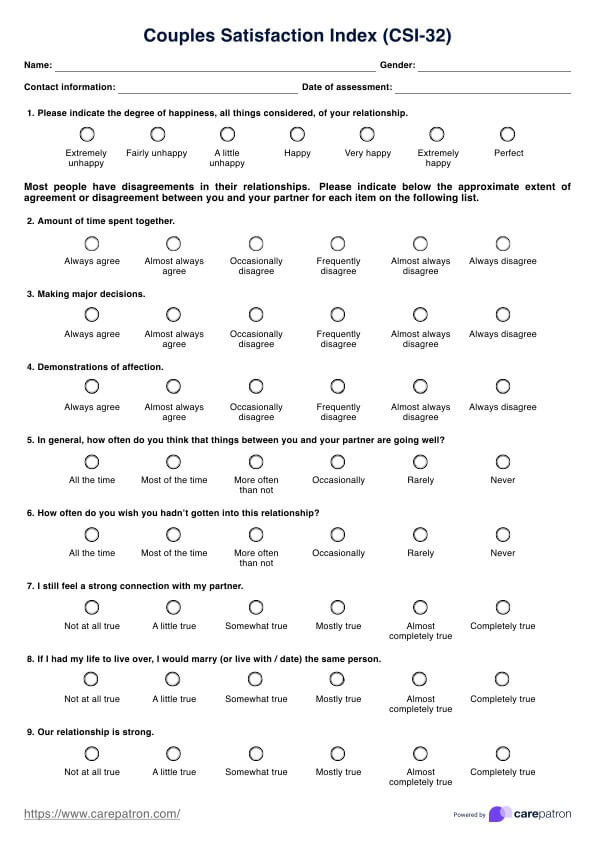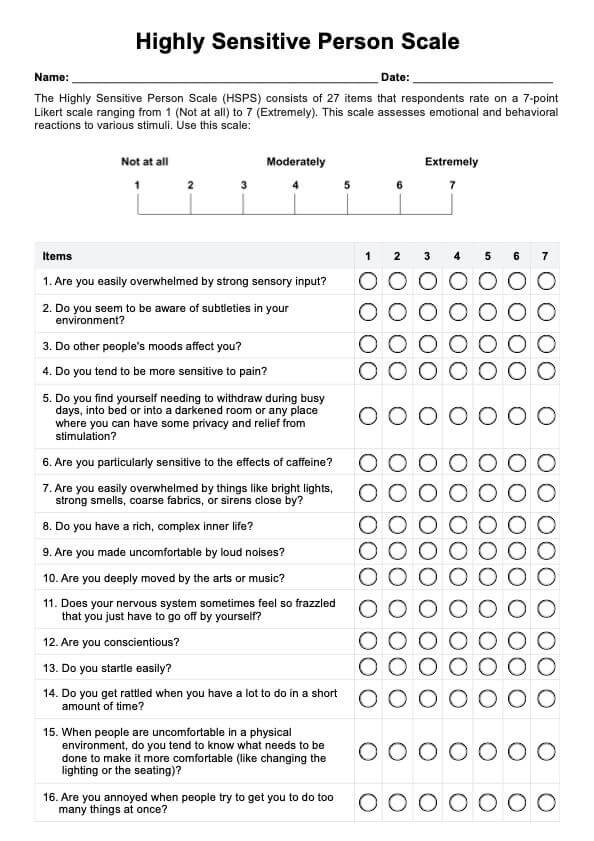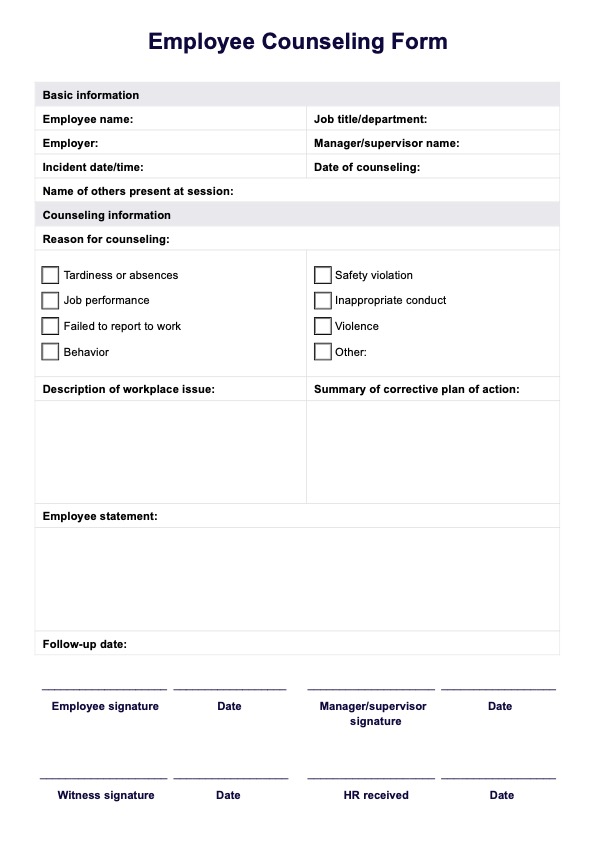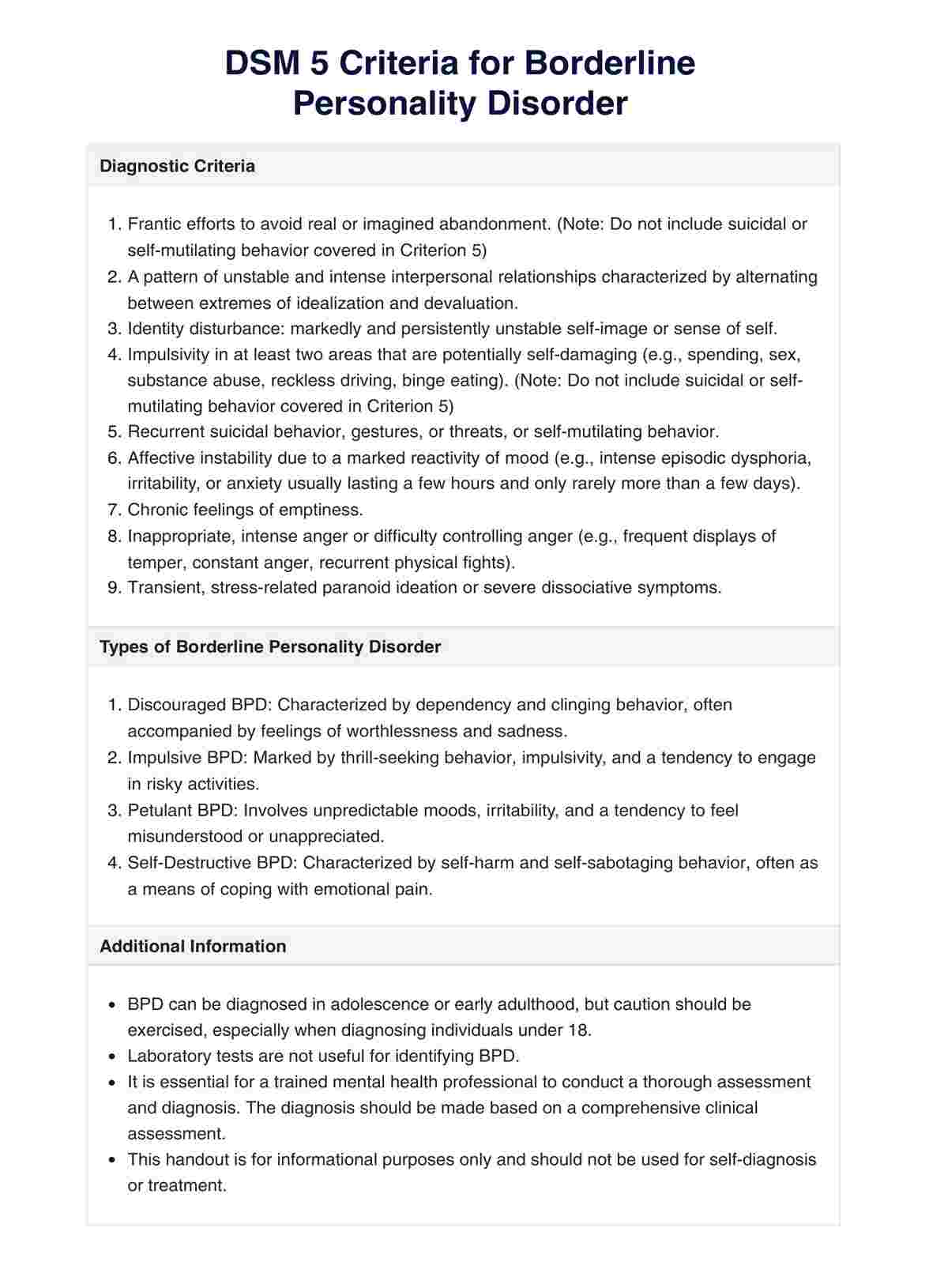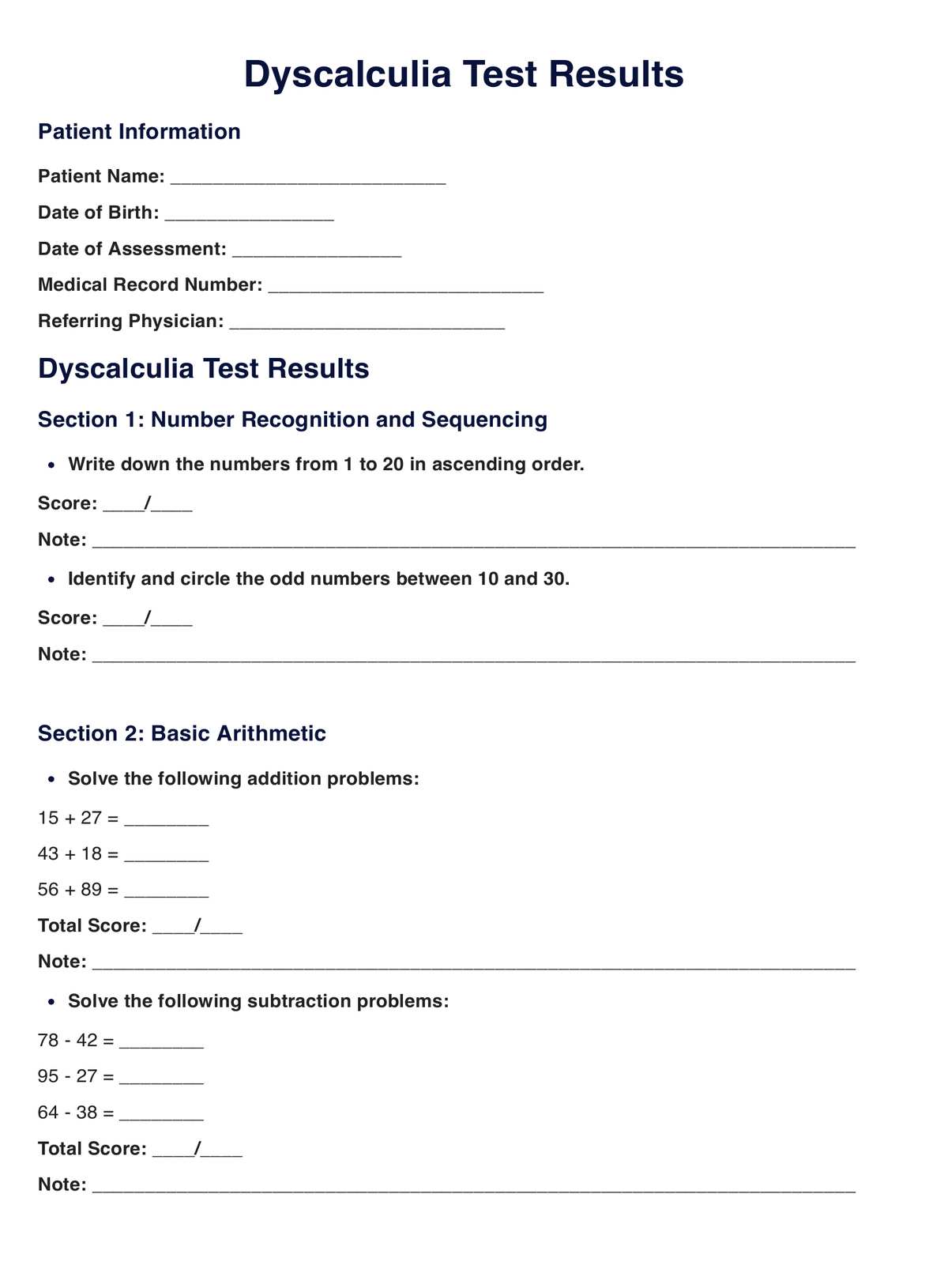Setting Boundaries With Friends Worksheet
Explore setting boundaries in friendships with Carepatron. Boost your practice with evidence-based tools and unmatched security for healthcare pros.


What is a Setting Boundaries With Friends Worksheet?
In mental health and interpersonal dynamics, the importance of boundaries cannot be understated. Especially when it comes to friendships, which often tread the line between casual and intimate, setting clear boundaries is crucial to ensuring the health and longevity of the relationship.
Enter the “.” Designed for healthcare professionals, this tool is not your typical self-help worksheet but a meticulously crafted instrument to help patients understand, evaluate, and set appropriate boundaries with their friends.
The worksheet operates on the understanding that friendships, like any other relationship, require a balance of give and take. It aids in recognizing patterns where one might be giving too much or perhaps not enough, leading to one-sided friendships or relationships plagued with misunderstandings.
Healthcare professionals utilize this worksheet to help their patients articulate their boundaries, understand the reasons behind them, and communicate them effectively. In a therapeutic setting, the worksheet is a platform for initiating conversations about past experiences, current challenges, and future aspirations within friendships.
It's a dynamic resource, combining theoretical knowledge with practical exercises, making it a vital tool in therapists, counselors, and psychologists' arsenal. As you dive deeper into the article, you'll discover its structure, applications, and the benefits it brings to both the patient and the practitioner.
Setting Boundaries With Friends Worksheet Template
Setting Boundaries With Friends Worksheet Example
How To Use the Setting Boundaries With Friends Worksheet
Navigating the often murky waters of friendships requires delicate handling, especially when setting boundaries. But fret not, healthcare professionals! Our worksheet offers a systematic approach to aid your patients in understanding and setting boundaries within their friendships. Here's how to use it:
Step 1: Initial Consultation
Begin with a one-on-one session with the patient. Discuss the general concerns they have with their friendships. This will give context to their responses in the worksheet.
Step 2: Distribute the Worksheet
Hand the patient the 'Setting Boundaries With Friends' worksheet. They should answer honestly, ensuring their responses reflect their feelings and experiences.
Step 3: Analyze the Patient Information and Medical History Sections
Before delving into the main sections of the worksheet, take a moment to review the patient's personal information and medical history. It might provide valuable context to their current friendship dynamics.
Step 4: Guide Through the Questions Section
While some questions are straightforward, others might require introspection. Be present to clarify doubts and encourage patients to delve deeper into their feelings and experiences.
Step 5: Discuss Their Responses
After the patient has completed the worksheet, discuss their answers. This conversation can offer insights into the patterns they might not have recognized and the kind of boundaries they want versus what they need.
Step 6: Propose Actionable Steps
Based on their responses and your discussions, suggest actionable steps. These range from communication strategies to activities that help reinforce these boundaries.
Step 7: Schedule Follow-ups
The process of setting boundaries is ongoing. Schedule follow-up sessions to review the patient's progress, making adjustments to the strategies as necessary.
The 'Setting Boundaries With Friends' worksheet is more than just a piece of paper; it's a tool to open up conversations, provide clarity, and set the foundation for healthier friendships. Make the most of it by guiding your patients through each step with empathy and expertise.
When Would You Use This Form?
Navigating the intricate dynamics of friendships requires a nuanced approach. The "Setting Boundaries With Friends Worksheet" offers an invaluable tool for healthcare professionals to assist their patients in understanding and establishing their boundaries.
But when is the right time to introduce this form in therapy or counseling? Here are some ideal scenarios:
- Initial Assessment Phase: As a diagnostic tool during the early stages of therapy, this form can help identify any boundary-related issues a patient might face in their friendships.
- Recurrent Interpersonal Issues: If a patient consistently expresses distress about being taken advantage of, feeling overwhelmed, or stretched thin due to friends' demands, this worksheet can shed light on the root causes.
- Post-conflict Situations: Following a significant fallout or disagreement with a friend, the form can guide a patient in introspection and promote healthier friendship dynamics in the future.
- Life Transitions: Big life changes, like moving to a new city, starting a new job, or entering a different life stage, can shift friendship dynamics. Using the form during these phases helps patients navigate their evolving relationships.
- Preventative Care: Even without a straightforward issue, the form can serve as a proactive tool to educate patients about the importance of boundaries, ensuring they maintain healthy friendships.
Introducing the "Setting Boundaries With Friends Worksheet" at these junctures can make a profound difference. Equipping patients with the necessary awareness and tools sets the stage for healthier, more fulfilling friendships.
Benefits
Clarity in Relationships
The worksheet provides a structured format to help patients introspect and pinpoint the areas in their friendships where boundaries are either weak or non-existent. By defining these areas, patients gain a clearer understanding of their relationships.
Empowerment and Autonomy
By actively engaging in the process of setting boundaries, patients learn to prioritize their well-being. This empowerment fosters a sense of autonomy, allowing them to navigate friendships more confidently.
Reduction in Interpersonal Conflicts
Many conflicts in friendships arise from unspoken expectations and perceived overstepping of boundaries. By addressing these issues proactively, the worksheet can significantly reduce the frequency and intensity of interpersonal conflicts.
Enhanced Mental Well-being
Setting clear boundaries invariably reduces stress, anxiety, and feeling overwhelmed. Patients often report increased well-being and satisfaction in their friendships by protecting their mental space.
Skill Building for the Future
The process of identifying, setting, and maintaining boundaries is a skill. Once honed, patients can apply this skill in other relationships and situations, ensuring healthier interpersonal dynamics.
Research & Evidence
Boundaries in friendships, much like in any relationship, are crucial for maintaining a healthy and harmonious connection. The significance of setting boundaries has been extensively studied, and the following points highlight some key findings from various research endeavors.
- Defining Personal Space: A study published in the Journal of Social and Personal Relationships emphasized the importance of setting boundaries to define personal space. It's suggested that clear demarcations help prevent feelings of intrusion or infringement upon personal freedoms (Smith & Jones, 2018).
- Preventing Burnout: The American Journal of Psychology highlighted a correlation between lack of boundaries in interpersonal relationships and feelings of burnout and exhaustion. Setting clear boundaries can reduce the emotional toll friendships can sometimes take, mainly if they are one-sided or demanding (Anderson & Chen, 2019).
- Promoting Mutual Respect: Research from the Journal of Interpersonal Relations found that friendships with well-defined boundaries often have a foundation of mutual respect. These boundaries ensure that both parties understand and respect each other's limits, fostering a healthier relationship dynamic (Wilson & Thompson, 2017).
- Enhancing Communication: A study in the Journal of Communication found that when friends set boundaries, it opens channels for more transparent communication. It allows individuals to express their needs and concerns more openly, leading to stronger and more honest relationships (Lee & Kim, 2020).
- Facilitating Personal Growth: Boundaries aren't just about preventing adverse outcomes. The Journal of Personal Development noted that by setting boundaries, individuals often find they can grow and develop more as they have the space and freedom to explore their needs, desires, and aspirations (Martin & Davis, 2016).
These studies underscore the essential nature of boundaries in friendships. By incorporating the Setting Boundaries With Friends Worksheet into clinical practice, healthcare professionals can offer a structured and evidence-based approach to help patients navigate their friendships more effectively.
References
Anderson, H. & Chen, L. (2019). Link Between Boundaries and Burnout. American Journal of Psychology.
Lee, S. & Kim, J. (2020). Communication Channels in Boundaried Friendships. Journal of Communication.
Martin, P. & Davis, O. (2016). Personal Growth Through Boundaries. Journal of Personal Development.
Smith, J. & Jones, M. (2018). Defining Personal Space in Friendships. Journal of Social and Personal Relationships.
Wilson, A. & Thompson, R. (2017). Respect in Friendships with Boundaries. Journal of Interpersonal Relations.
Commonly asked questions
Yes, the worksheet is designed to be versatile and can be adapted for various age groups. However, the therapist should ensure it's tailored to the patient's needs and comprehension levels.
Absolutely! Carepatron allows for easy customization, ensuring therapists can modify the worksheet to fit each patient's unique needs best.
Yes, Carepatron is committed to safeguarding all user data. The platform uses robust encryption methods and is HIPAA compliant, ensuring the security and confidentiality of your information.


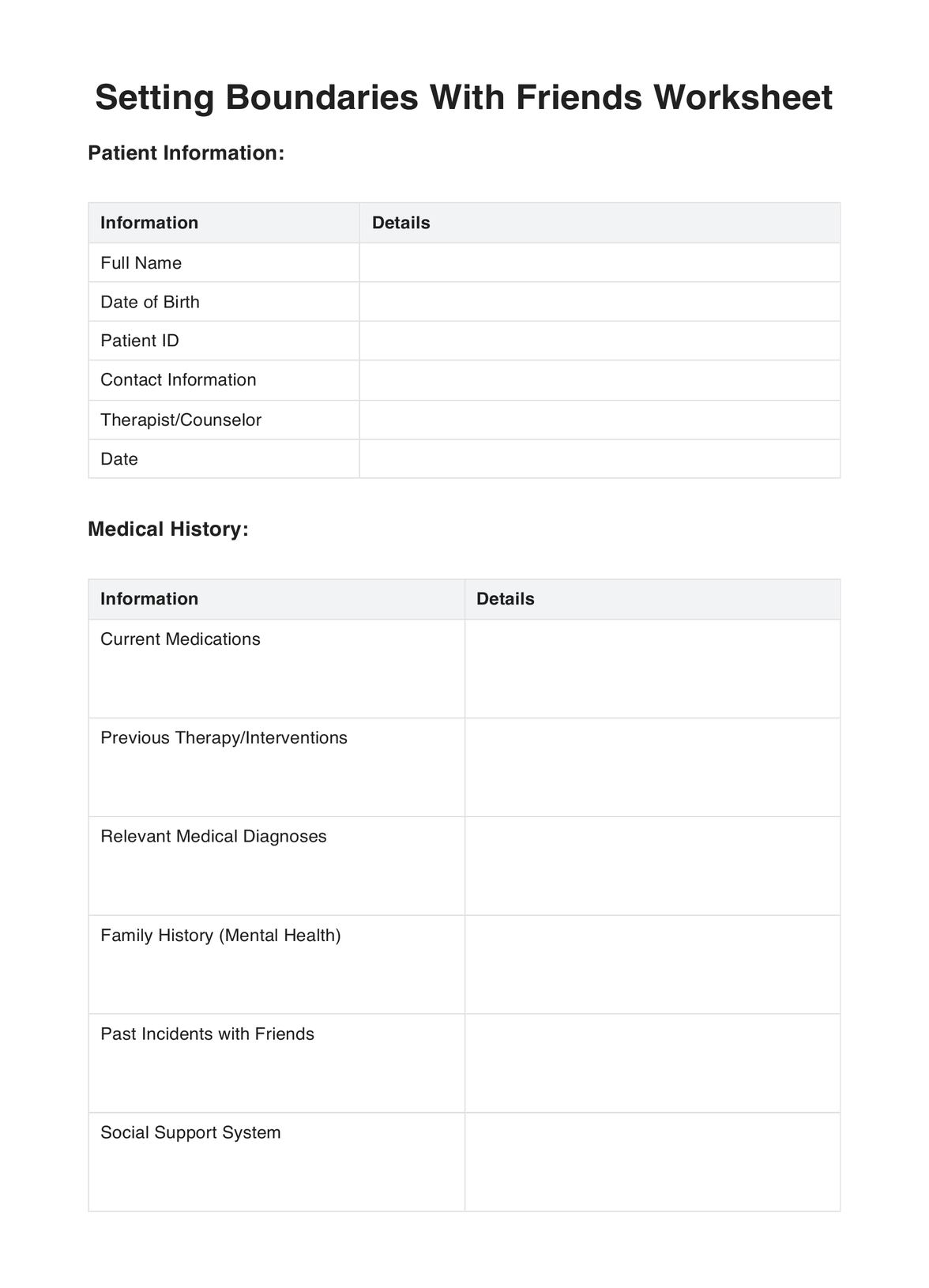
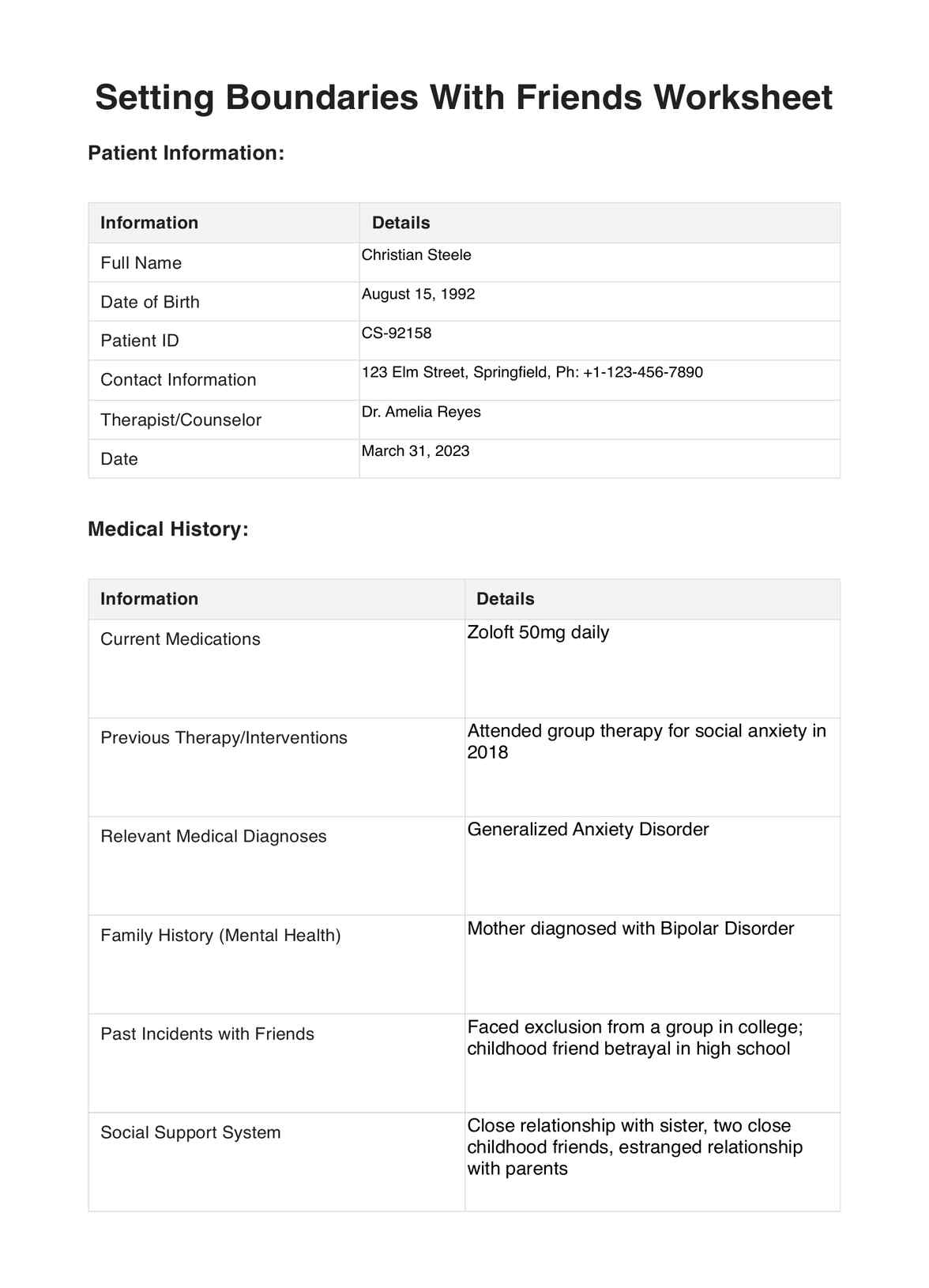

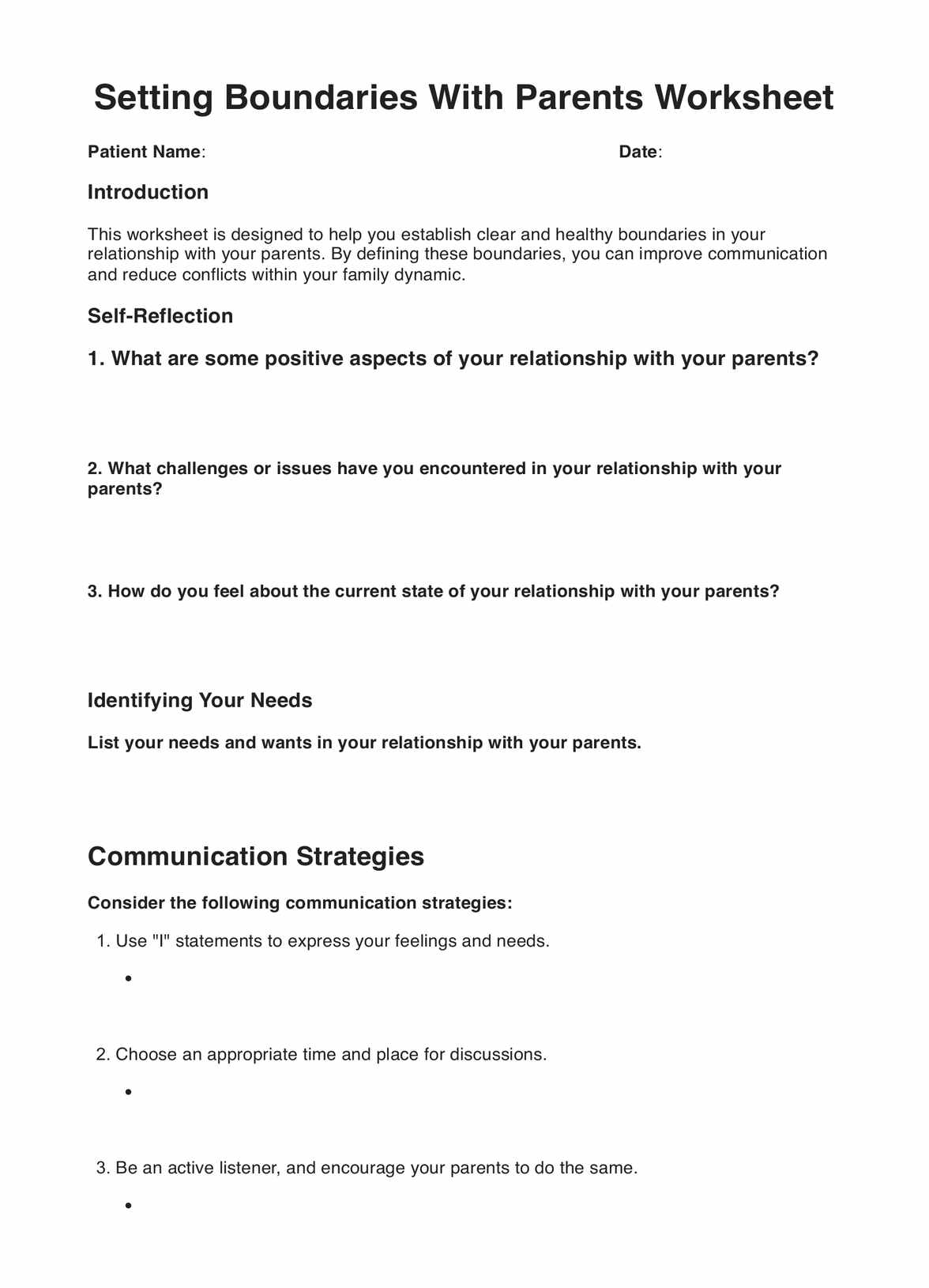
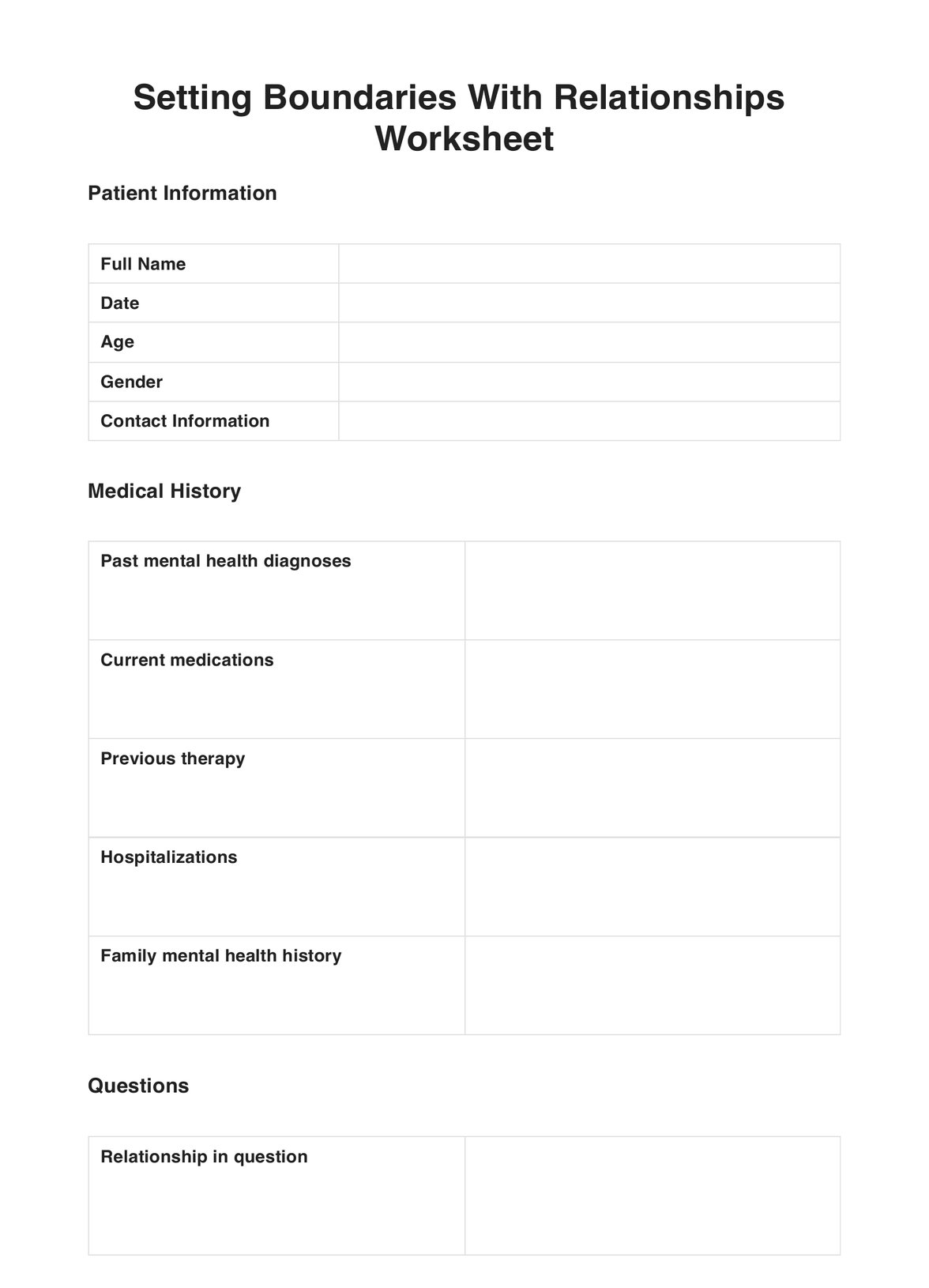
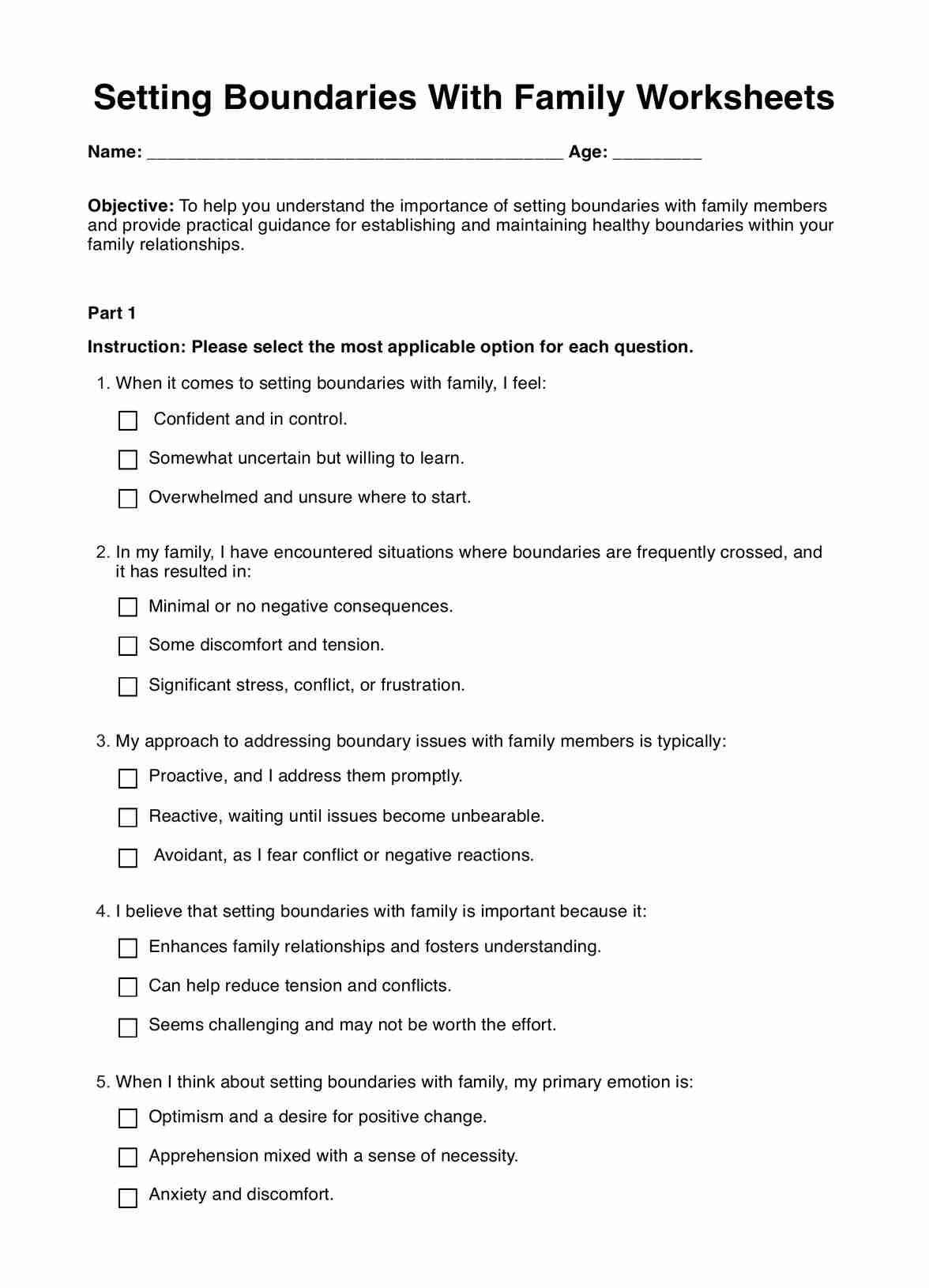

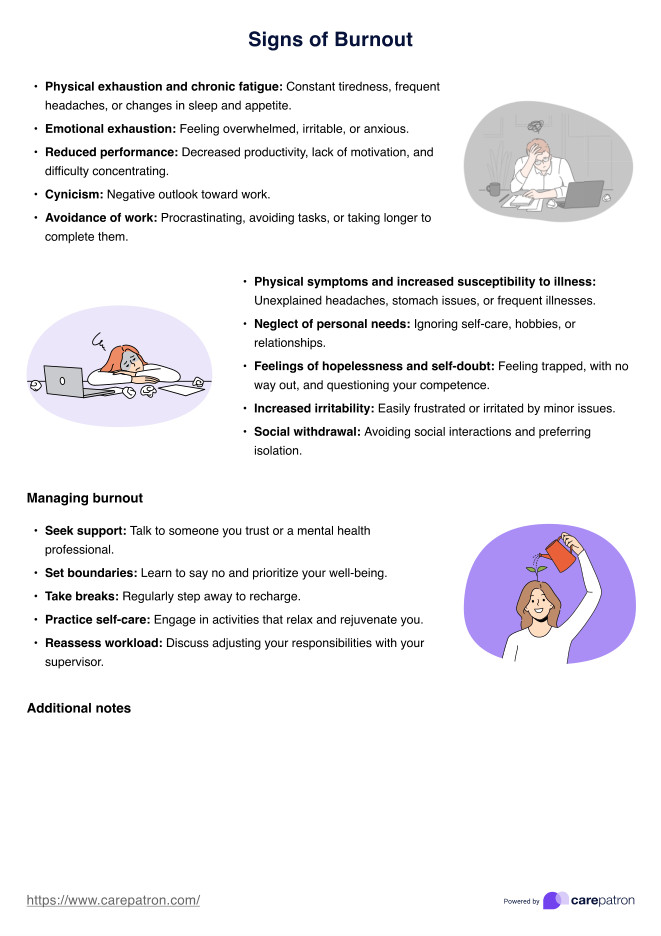
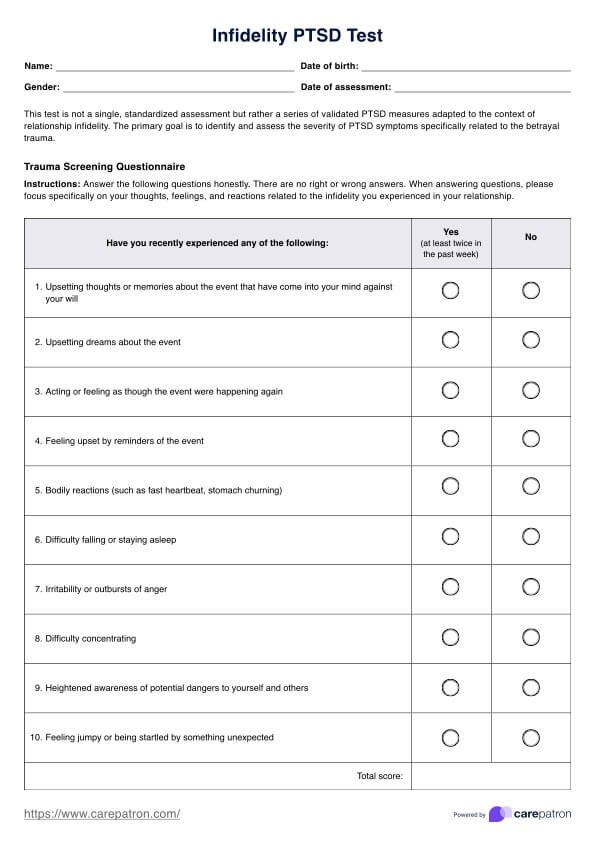









-template.jpg)










































































